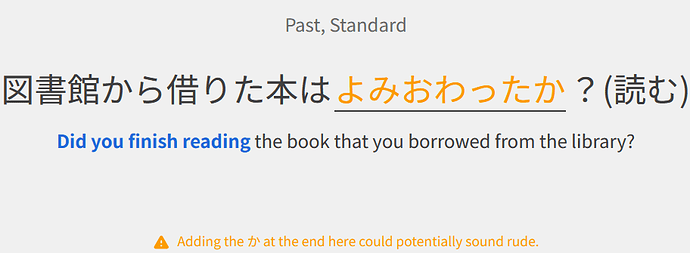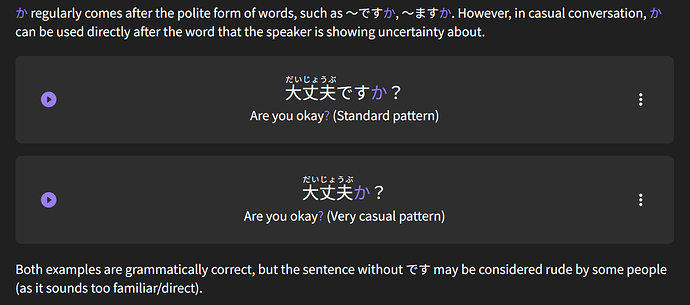Hi everyone,
Today I was accidentally rude to Bunpro. I’m sorry Bunpro-san!
I’m sure Bunpro-san will forgive me, but unintentionally offending someone is a big fear of mine. Does anybody know what the theory here is? When does a か cause a rude nuance? I want to avoid this pitfall if possible.


